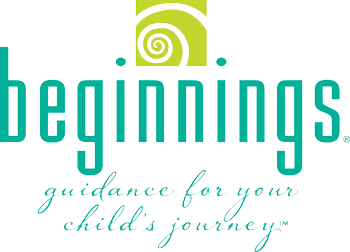
For many families, love is expressed not just through words but through gestures, actions, and shared experiences. In multilingual families, this expression takes on an even richer meaning, as parents work to create connections across languages, cultures, and communication styles. When a child is deaf or hard of hearing, the journey of communication may look different, but the love and effort families invest remain the same.
At BEGINNINGS, we understand that each family’s story is unique, just as every child’s communication needs are different. By embracing all modes of communication, families can build bridges of understanding and ensure that love is expressed and felt in every language they speak.
Multilingual families often weave together various methods of communication to support their child’s needs. Here’s how different approaches can play a part in creating meaningful connections:
American Sign Language (ASL)
American Sign Language (ASL) offers a visual language that’s as expressive as it is beautiful. For children who are deaf or hard of hearing, learning ASL alongside their family can open doors to communication, and in multilingual families, ASL can serve as a shared language that unites everyone, regardless of the spoken languages they use.
Families may choose to pair ASL with their home language by signing while speaking. This approach helps children develop a deeper understanding of both the signed and spoken languages. For instance, a parent might sign “I love you” while saying it in Spanish, English, or another language, offering their child multiple ways to feel loved and connected.
Spoken Language
For families using spoken language, hearing technologies such as hearing aids or cochlear implants play a key role in helping children access sounds. Multilingual families can support their child’s spoken language development by intentionally creating opportunities to hear and practice both the primary language spoken at home and other languages used in their community.
Simple activities like singing songs, telling stories, or narrating daily tasks in different languages can support spoken language development while strengthening emotional bonds. Parents may also work with speech therapists or auditory-verbal therapists to navigate their child’s unique needs while preserving their family’s multilingual identity.
Cued Speech
For families focusing on spoken language, cued speech can be a helpful tool. By combining hand shapes with mouth movements, cued speech helps children visually distinguish the sounds of spoken words, making it easier for them to develop language skills. Multilingual families can adapt cued speech to multiple languages, providing their child with visual access to the sounds of each language.
Total Communication
Many families find that a combination of methods works best for their child. This approach, known as Total Communication, may include ASL, spoken language, gestures, visual aids, and more. Multilingual families using Total Communication can incorporate all the languages and communication methods that best meet their child’s needs, creating a personalized approach that reflects their values and goals.
Tips for Multilingual Families
Navigating communication in a multilingual family can sometimes feel overwhelming, but it’s also an opportunity to celebrate the diversity of your family’s love. Here are a few tips to guide you along the way:
- Choose What Feels Right for Your Family: There’s no one-size-fits-all approach to communication. Experiment with different methods to find what works best for your child and family.
- Celebrate Small Victories: Every new sign, word, or gesture is a step forward. Celebrate these milestones as a family and let them remind you of the love driving your efforts.
- Involve the Whole Family: Encourage everyone—siblings, grandparents, and extended family—to learn and participate in your chosen communication methods. The more support your child has, the stronger their connections will be.
- Stay Consistent: While juggling multiple languages and communication methods can be challenging, consistency is key. Create routines that incorporate your chosen approaches to help your child develop confidence and understanding.
- Seek Support: You don’t have to do it alone. Work with educators, therapists, and organizations like BEGINNINGS to find resources and guidance tailored to your family’s needs.
Love That Speaks Every Language
At its core, communication is about connection, and connection is about love. What matters most is the time, effort, and care you invest in helping your child feel understood and supported. Multilingual families have the unique opportunity to show their love through every language and communication method they use.
This Valentine’s Day, celebrate the ways your family comes together to build bridges of understanding, no matter how many languages you speak. At BEGINNINGS, we’re here to support you every step of the way. Let’s celebrate love, connection, and the power of communication in all its forms.
Happy Valentine’s Day!



